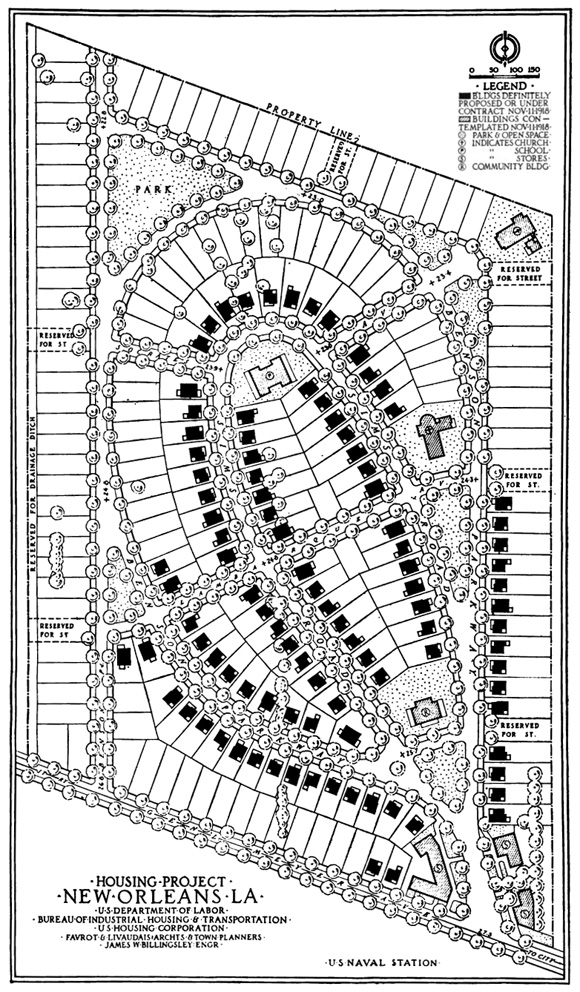New Orleans, LA
General Description (1919 report):
"The New Orleans Naval Station is located across the Mississippi River from New Orleans, approximately 4 miles from the main business section of the city, but still within the city limits, in the suburb of Algiers...
"From the reports of the special investigators sent out by the Housing Corporation it was determined that there was an acute demand for housing at the station and that at least 100 workmen's houses should be built together with foremen's houses, cafeterias, and, possibly, a small business and recreation center...
"A preliminary sketch being submitted by the designers and the work now having arrived at the point where the land must be purchased, negotiations were pushed to acquire it. The owners still held the price so much above what the officials... had estimated, that the corporation refused to purchase. The site was abandoned and a second site on which options had been taken was recommended and approved. This site was south of the naval reservation and immediately adjoining it and about one-quarter of a mile farther east than the site first selected."

1919 excerpt describing the design of the New Orleans Site:
Area planned: 42.90 acres. Housing planned: Detached houses, 209 families.
"There were no topographic variations in the site sufficient to make one street layout better suited to the surface than another. There was a row of fine live-oak trees, scattered specimens, near the northwestern corner of thesite. All the traffic from the site naturally sought the north, and mostly the northwest corner, this being the nearest way to town and to the naval station.
"The design of the streets was therefore based on an entrance at the northwest corner, with stores on each side, community building facing down the short entrance road, and a simple curvilinear development, self-contained but not interrupting the future street system of the neighborhood. Sites were set aside for a school and for churches...
"The houses were the same type of bungalows planned for Charleston, SC and Pensacola, Fla.
"The project was still in the design stage when the end of the war came. It had been delayed...by the serious complications that had arisen in regard to the purchase of real estate. If it had not been for these delays, it is probable that the project would have been advanced so far that the Housing Corporation would have completed it."